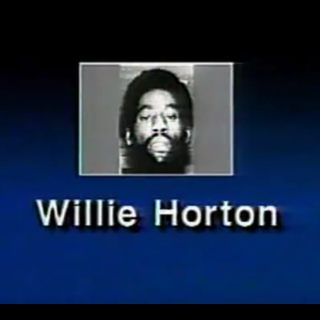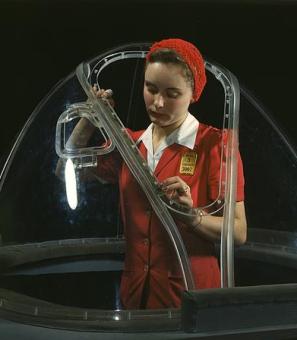Remembering Len Bias
The court was closed off to students like it always was after basketball season was over. A sign over the floor read “Keep Off” and there was a still darkness inside of Cole Field House.
Students sat quietly in the top rows of the yellow seats in the arena, thinking, wondering. While some stared down at the court with wide eyes, others leaned back in their seats with their eyes closed.
Raw emotion spread across the arena as they came to remember the Maryland Terrapin legend, Len Bias.
Just a few days before, Bias had been on top of the world, the second pick in the NBA draft by the famed Boston Celtics. His college career at Maryland had been legendary. Coach “Lefty” Driesell even called Bias “the greatest basketball player that ever played in the Atlantic Coast Conference.”[1] High praise considering this was same league that produced Michael Jordan, David Thompson and a host of other greats.
On the night of the NBA draft – June 17, 1986 – Len Bias and his family waited to hear his name called. When the Cleveland Cavaliers selected Brad Daugherty with the top pick, everything fell into place for Bias to go to the Boston Celtics, just as he’d hoped.
As he’d told a reporter before the draft,“Can you believe me playing in Boston? Larry Bird and D.J.? The Boston Garden?”[2]
When his name was announced, the 6’8” forward walked up the steps onto the stage to meet NBA Commissioner David Stern, who waited with a green Celtics hat, smiling from ear to ear. “He was the happiest of anyone I ever saw that I ever signed,” remembered Celtics President Red Auerbach.[3]
The next day Bias and his father, James, flew to Boston for an introductory news conference and a meeting with Reebok, which had offered Len a 1.6 million dollar shoe endorsement deal. When they came home later the same day, Len was ecstatic, excitedly telling his dog, “We’re going to Boston! We’re going to Boston!”
Around 10pm, Bias decided to head back to campus to celebrate with his college teammates and other friends. Before he left, his father went up to him at his car and said, “Be careful where you go, be careful who you’re with.”
Back at his dormitory, Bias met up with Brian Tribble, Terry Long and David Gregg to celebrate with beer and cocaine. Throughout the evening other guests dropped in and out. As Tribble remembered, “We would put the coke away for 30 minutes, 40 minutes until you leave then we will go and pull it out and start socializing with it again.”[4]
They snorted cocaine and drank alcohol most of the night but in the wee hours of June 19, the mood suddenly changed.
“I seen him lean over and sit on the bed and then lay back on the bed,” Tribble recalled.
The next thing they knew, Bias started convulsing in a wild seizure. Long and Gregg ran out the room to go wakeup their other teammates next door.
“I was awakened by David Gregg and he came into the room that Lenny and I shared and he said… ‘Get up! Get up! Get up! Lenny passed out!’”[5] said Jeff Baxter, a former teammate.
Bias lay on the floor of the dormitory suite as Tribble was on the telephone asking a county emergency dispatcher for help.[6] “It's Len Bias. He passed out. His body is shaking. You have to get here fast. You have to save him.”[7]
Paramedics rushed Bias to Leland Memorial Hospital, which was not far from Maryland’s campus. Bias’s parents and teammates anxiously awaited word on his condition.
Len Bias was pronounced dead at 8:55 a.m. of cardiac arrest. His teammates and family were devastated. Derrick Lewis, a former teammate of Bias said, “I remember Keith walking from that place to that place, hitting a wall and walking back to that spot and hitting a wall again.”[8]
Bias’s death caused a reaction of shock and sadness in his community and across the world. “I was astounded, taken back to find out how many people were torn up about his death,” Len’s mother, Lonise Bias, said. “I can remember the first flowers we received were peonies, they were from Michael Jordan.”[9]
Len Bias… “That is who I wanted to be when I grew up”, said a then 15-year-old Sean Sanders, friend of Bias in his community. “Because he was so good. He was it. That was The Man around here.”[10]
University of Maryland students were also devastated at the news. As classmate and friend Myriam Leger said, “It was the innocence that was taken from us, we were not naïve anymore, we didn’t feel invincible anymore.”[11]
The fallout at Maryland would be felt for years. Coach Lefty Drisell resigned under scrutiny and Bias’s death spurred an in depth review of the athletic department. The University created stricter admissions standards, enhanced its new mandatory random drug testing program, and raised academic standards for athletes to remain eligible for play.[12]
Bias’s passing also triggered increased awareness of the drug problem nationally. As longtime Georgetown University basketball coach John Thompson, Jr. observed, “He caused a lot of other people to be saved because he created a consciousness of it, and we respond to crisis.”[13]
With increased awareness came increased debate, however.
On the heels of Bias’s death, Congress passed the Anti-Drug Abuse Act of 1986 and President Reagan signed it into law.[14] This statute prescribed mandatory prison sentences for anyone caught with even very small amounts of cocaine. Penalties were especially harsh for crack cocaine, which was the main drug of choice in the inner cities during the 1980s and 1990s.
Critics argued that the policies unfairly targeted African American communities. According to Julie Stewart, President of Families Against Mandatory Minimums, “When they decided five grams of crack and cocaine could trigger a five year sentence, they had in mind young black men with gold chains going to prison.”[15]
In a tragic epilogue to the story of Len Bias’s death, the Bias family lost his younger brother, Jay, just four years later. On December 4, 1990, Jay Bias was shot to death in the parking lot of a Prince Georges County shopping center after a dispute with a clerk in a jewelry store.
Footnotes
- ^ Gildea, William and Dave Sell. “Driesell: Bias ACC’s Best Ever: Terrapins Grieve Loss of Friend, Teammate.” The Washington Post 20 Jun. 1986: C1.
- ^ Wilbon, Michael. “Bias' Death Leaves Mourning and Questions: Promised Future of NBA Stardom Is Gone, His Legacy of Talent at Maryland Remains.” The Washington Post 20 Jun. 1986: C1.
- ^ 30 for 30: Without Bias. Dir. Kirk Fraser. ESPN Home Entertainment, 2010.
- ^ 30 for 30: Without Bias. Dir. Kirk Fraser. ESPN Home Entertainment, 2010.
- ^ 30 for 30: Without Bias. Dir. Kirk Fraser. ESPN Home Entertainment, 2010.
- ^ Harriston, Keith. "Len Bias Case Going to Trial." The Washington Post 24 May 1987: 35.
- ^ Weinberg, Rick, “34: Len Bias Dies of Cocaine Overdose,” ESPN.com http://sports.espn.go.com/espn/espn25/story?page=moments/34
- ^ 30 for 30: Without Bias. Dir. Kirk Fraser. ESPN Home Entertainment, 2010.
- ^ 30 for 30: Without Bias. Dir. Kirk Fraser. ESPN Home Entertainment, 2010.
- ^ Burske, Ed and Patrice Gaines-Carter. “Landover Loses ‘The Man’: Neighborhood Tries to Grasp Athlete’s Death”. The Washington Post 20 Jun. 1986: A1.
- ^ 30 for 30: Without Bias. Dir. Kirk Fraser. ESPN Home Entertainment, 2010.
- ^ Nakamura, David and Mark Asher. “10 Years Later, Bias’s Death Still Resonates.” The Washington Post. 19 Jun. 1986. http://www.washingtonpost.com/wp-srv/sports/longterm/memories/bias/laun…
- ^ 30 for 30: Without Bias. Dir. Kirk Fraser. ESPN Home Entertainment, 2010.
- ^ Easley, Jonathan, “The Day the Drug War Really Started,” Salon.com, 19 Jun 2011. http://www.salon.com/2011/06/19/len_bias_cocaine_tragedy_still_affectin…
- ^ 30 for 30: Without Bias. Dir. Kirk Fraser. ESPN Home Entertainment, 2010.




![Sketch of the mythical fuan by Pearson Scott Foresman. [Source: Wikipedia]](/sites/default/files/styles/crop_320x320/public/2023-10/Goatman_Wikipedia_Faun_2_%28PSF%29.png?h=64a074ff&itok=C9Qh-PE1)












